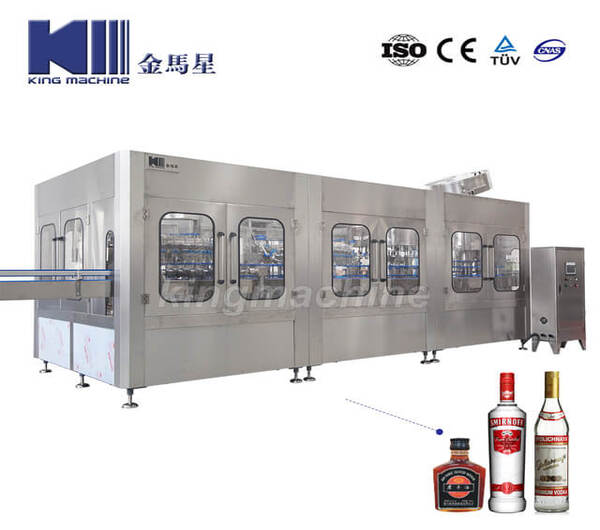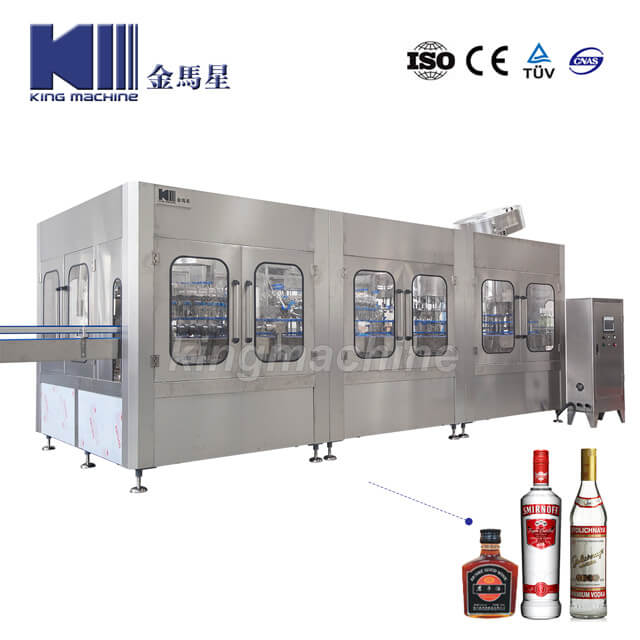News
Site Editor
 Site
/uploads/image/694e24f48271f.png
We've done all the work for you by providing our customers with wine-filling machines that can fill over 1000 bottles per hour!
Site
/uploads/image/694e24f48271f.png
We've done all the work for you by providing our customers with wine-filling machines that can fill over 1000 bottles per hour!
The Process of Bottling Wine Using the Wine Filling Machine
Views: 4000
Author: Site Editor
Publish Time: 2022-09-09
Origin: Site
Bottling wine can be a challenging process that requires a lot of time and attention. Not only do you need to make sure your labels are consistent, but also that the bottles are safe from harm during travel and storage.
We've done all the work for you by providing our customers with wine-filling machines that can fill over 1000 bottles per hour!
Hopefully, this article will help demystify the process by showing how those machines make it possible to bottle your wine without having to worry about all those pesky details like cleaning equipment and lots of other steps involved in the whole process.
1. Making The Wine
The first step in bottling the wine is to make it. This can be done at a winery or at home, but it's usually easier at a winery because they have all of the equipment necessary for making wine.
Wineries crush grapes and ferment them with yeast; then they add water and bottle the finished product.
2. Cleaning and Sterilizing Your Bottles and Equipment
Cleaning equipment is the next step, and it's important not to overlook it. When you're cleaning your bottles, don't forget about the equipment itself.
Also, keep an eye out for any rinsing agents or sanitizing agents that might have been used during previous steps in production. These should be removed before beginning any new operations so as not to contaminate subsequent batches of wine.

3. Placing The Bottles On A Conveyor Belt To Fill Them With Wine
The first step in using a wine-bottling machine is placing your bottles on a conveyor belt that takes them through an assembly line process where they are filled with something called 'synthetic cork'.
This material helps prevent air bubbles from forming during bottling, which would otherwise cause bottles to explode when they're opened later on down the road.
4. Spraying Inert Gas Over The Bottles
A device sprays an inert gas over the top of each bottle as it moves past so that there's no space for oxygen between the wine and the cork.
The inert gas used in the bottling process is argon. It's a noble gas and does not react with other chemicals, which means it won't cause oxidation of your wine.
5. Automatic Corking
As the bottle passes by, they are automatically corked. The process of filling and capping a bottle is called "corking." The machine that closes the wine bottles with corks is called a corker or wine bottle corker.
6. Labeling
A machine tops off each bottle with foil and labels each one with a date and other information. This is done to protect the wine from contamination during transport, as well as protect it from the elements by keeping out air and light.
The label contains information about the winemaker (if you're bottling wine from someone else), year of production, and even sometimes tasting notes for what's in your glass.
7. Storing The Bottles In A Dark Warehouse.
After you’ve bottled your wine, it is best to store it in a dark warehouse. This is important because light-induced oxidation can damage the flavor of the wine.
The bottles should be stored at a constant temperature (around 65 degrees Fahrenheit) in a dark environment that does not receive any direct sunlight or UV rays from windows.
The bottles should also be stored on their sides so that the cork does not dry out. This will help prevent oxygen transfer between different parts of the bottle and improve shelf life.
Purchase your wine-filling machine from us
If you are looking to purchase a wine-filling machine, we can help. We have a wide range of machines available and can deliver them to your location.
Our products come with a warranty that protects against defects in materials and workmanship, so you know they'll last as long as they should. To place an order, kindly click here.








